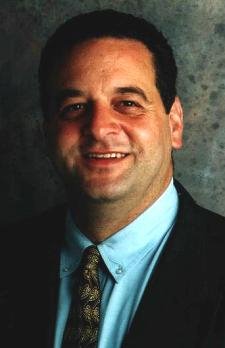Marin Independent Journal
Marin schools exceed goals in state tests
By Jennifer Gollan
IJ reporter
Wednesday, September 01, 2004 - Educator cites preparation as key to success
Half of Marin schools scored above the state's benchmark on California achievement tests this year, according to a report released yesterday by the state Department of Education.
A total of 37 schools in Marin hit the state's goal of scoring 800 or higher on this year's Academic Performance Index, or API, up from 35 schools that did the same last year. The index, based on a scale of 200 to 1,000, is required under the state's Public Schools Accountability Act of 1999.
"I think we are continuing to show that when a community supports public education, students achieve at the highest level," said Mary Jane Burke, superintendent of the Marin County Office of Education. "It is critical that we remember that a test score is just that, a test score. Until we are certain that each and every child is achieving at their highest level, we can't rest."
Mary Buttler, assistant county superintendent for education services, attributed Marin's escalating number of high-achieving schools to the increasing reliance by teachers on textbooks aimed at preparing students for state tests.
The API is factored into federal accountability standards outlined under the federal No Child Left Behind Act of 2001. The No Child Left Behind Act aims to raise academic proficiency of all students by 2014. To meet this goal, students must meet Adequate Yearly Progress (AYP) standards.
The progress standards assess schools based on the percentage of students who are able to demonstrate proficiency in each subject and at each grade level tested. Every subgroup - including English-language learners and special education students - must meet the federal standards. If they fail to do so for more than two years, schools must send their under-achieving students to higher-achieving schools.
Beyond that, the state Department of Education could intervene to bring the school up to par.
In Marin, 13 schools did not make AYP this year for various reasons, including the percent of students proficient in a certain subject area and the number of students who took the test. The schools that did not make AYP included Bayside School in the Sausalito Marin City School District, West Marin Elementary School in the Shoreline Unified School District and Gallinas School in the San Rafael City Schools District, Buttler said.
This year, nearly 6,000 California schools, or 65 percent, met the federal AYP criteria, compared with 54 percent last year, according to the state Department of Education.
In mid-October, the state Department of Education is expected to release information on the number of schools statewide that earned API scores above 800, as well as on progress of various ethnic or English learner groups and formally identify schools that need improvement.
Novato Charter School in the Novato Unified School District showed the most dramatic improvement of Marin schools in its API score, with a score of 841 in 2004, up from 771 last year.
"They put a huge effort in last year to start teaching standards-based instruction," said Jan Derby, superintendent of the Novato Unified School District. "Their API scores were not commensurate with the rest of the district for the last two years, and now they are."
Under state law, if a charter school fails to earn academic scores on par with other local schools for more than three years, a school district can revoke its charter.
The API score at Olive School, however, dropped 12 points this year to 781.
"That is something we need to analyze," Derby said.
In the Tamalpais Union High School District, API scores remained fairly steady above 800 at the district's three traditional high schools.
The API scores at Redwood and Sir Francis Drake high schools dropped by one point each, to 851 and 805 respectively, and that of Tamalpais by four points to 805.
"We are happy that we are meeting the state and federal requirements," said Christine Anderson, assistant superintendent for instruction at the Tamalpais Union High School District.
"Those are insignificant differences," Anderson said of the slight decrease at the district's three traditional high schools. She attributed this year's scores to federal requirements under No Child Left Behind, which this year required more students to take the test, many of them for the first time.
"We work really hard at getting people to take the test - very often those who haven't taken the test don't do as well," she added.
Tamiscal High School, with an alternative program, increased its API score by 15 points to 808 this year.
In the San Rafael schools, several elementary schools showed improvement of at least 20 points on the API, including Bahia Vista, Laurel Dell and San Pedro. San Pedro, for example, had an API score of 587 last year, compared with 614 this year. Laurel Dell had an API score of 671 last year, compared with 693 this year. Bahia Vista's API score went up 22 points to 685.
"I think that one of the things that we've tried to do is to support our schools with high-quality instructional materials and staff development - that has shown in these three elementary schools," said Rebecca Rosales, assistant superintendent for K-12 curriculum and programs.
Terra Linda High School's API score increased 43 points to 775 this year.
Gallinas and Davidson Middle School were among the schools in Marin that did not make AYP.
"They are not making AYP because the subgroups - Hispanics, those with learning disabilities, and English learners - have narrowly missed the AYP criteria," Rosales said. "They require additional instructional attention. We want to continue to reinforce skill acquisition at the same time that content deepens and becomes more abstract in terms of thinking."
Contact Jennifer Gollan via e-mail at jgollan@marinij.com
Copyright and permissions

